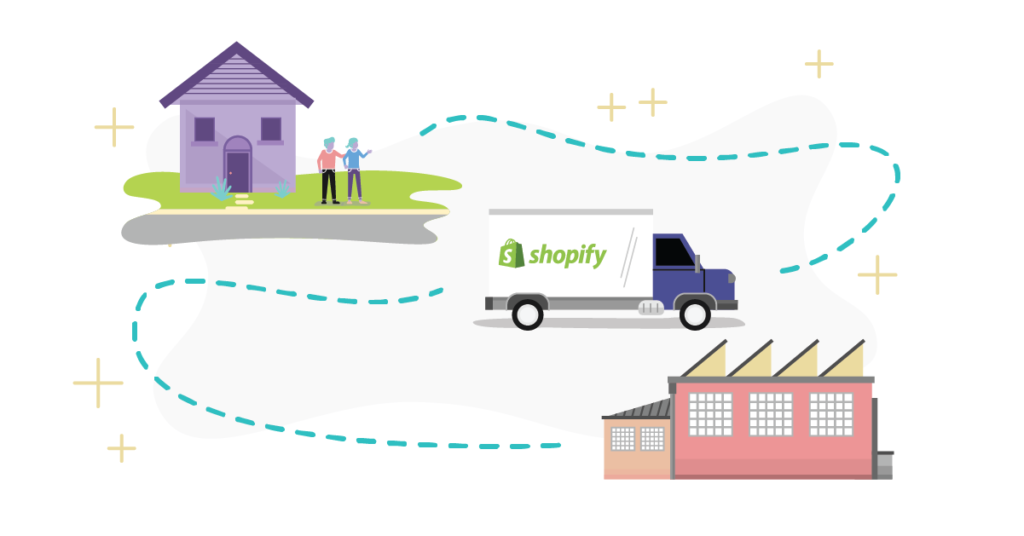Dropshipping makes it incredibly easy for sellers to launch ecommerce stores because they don’t have to manufacture products, maintain inventory or handle shipments. The accessibility and simplicity of this business model enable anyone to break into ecommerce, and, thanks to Shopify — the leading ecommerce platform for online retailers with more than a million users — selling a variety of products via dropshipping is easier than ever.
But what exactly does Shopify offer dropshippers? For one, it’s extremely user-friendly and works with numerous apps specifically designed for dropshipping. Plus, it has a variety of features that enable you to do much more than just sell products — you can also make payments, track shipments, engage in marketing, develop an abandoned-cart strategy and view analytics.
However, depending on the size and scope of your online store, as well as the features it requires, Shopify can also be quite expensive. While a basic Shopify plan is only $29 per month, gaining access to all of Shopify’s features can cost $299 per month.
If you’re considering Shopify dropshipping, read on for everything you need to know about the pros and cons of using Shopify for dropshipping, how to set up your store and the best apps to use to acquire inventory for your business.
What is dropshipping?
Dropshipping is a fulfillment method in which the seller doesn’t keep the products it sells in stock. Instead, when an order comes in, the retailer transfers the customer’s order and shipping information to a third party, such as a manufacturer, wholesaler or another retailer that then ships the product to the customer. The retailer curates and markets products but never actually handles any items that are sold.
For example, Meowingtons.com, a successful niche ecommerce site built on Shopify that specializes in all things cat, launched in 2014 exclusively selling products available via dropshipping. You can see the website’s original design and some of the products it offered in the screenshot below.
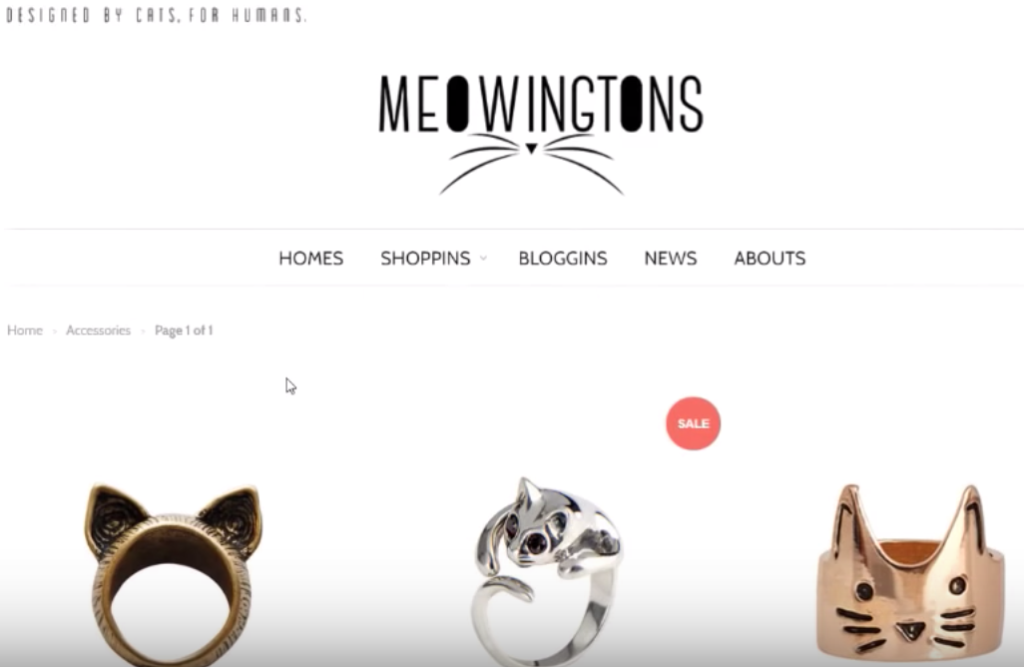
When Meowingtons first launched, the store sold a variety of cat-centric items, including jewelry. Many of these products were sourced from AliExpress, but Meowingtons marketed and sold the items on its own branded website. When a customer purchased a cat ring from Meowingtons, for example, the item was actually packaged and shipped via AliExpress.
This ecommerce store for feline fans was hugely successful, garnering thousands of visitors per day and gaining hundreds of thousands of followers across social media. As it became more successful, Meowingtons expanded its product selection, and today the business no longer relies solely on dropshipping.
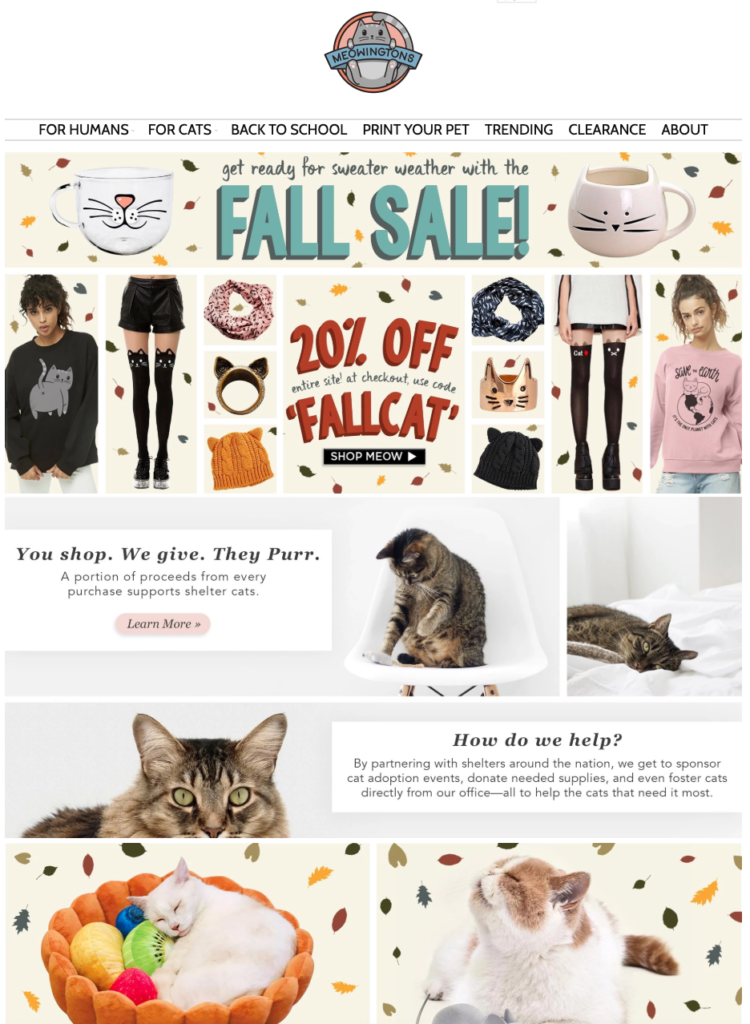
Now that you understand how dropshipping works, let’s take a look at the pros and cons of this business model.
Pros and cons of dropshipping
There are a lot of advantages to using dropshipping for your ecommerce store; however, there are some disadvantages as well. We’ll explore both below.
Pros of dropshipping
- Not much capital is required. One of the greatest appeals of dropshipping is that it doesn’t require a lot of investment to get started because you don’t have to purchase inventory. You pay for the product only once it’s been purchased and the buyer has paid you.
- It’s simple to manage. Since you don’t have to purchase, store, maintain or ship inventory, it’s easy to launch and manage your store. This also enables you to spend more time and resources on your store design and the marketing of your products.
- There are few overhead costs. In addition to not having to purchase inventory upfront, you also don’t have to pay for other common e-commerce costs such as inventory storage or fulfillment. While you can technically start a dropshipping business at no cost, Paul Lee, owner of the six-figure ecommerce store HUSKYBEARD, suggests spending at least $500.
- You can sell a variety of products. There’s no shortage of products available to add to your dropshipping store, and with no upfront costs, there’s nothing prohibiting you from providing your customers with a wide selection of items.
- It’s easy to expand. The dropshipping business model requires that most of the heavy lifting be carried out by your suppliers, which enables you to add to your inventory and grow your ecommerce business.
Cons of dropshipping
- There are typically low margins. The ease and low cost of setting up and managing a dropshipping store mean that there’s a lot of competition in the dropshipping space, so it’s not uncommon for retailers to price items incredibly low.
- You have no control over inventory or supplier issues. When you’re not stocking and managing your own inventory, it can be challenging to ensure items are always available, especially when you’re working with suppliers that also provide products to numerous other retailers. However, certain integrations, such as dropship automation software, can help you avoid these issues by permitting you to seamlessly integrate suppliers’ inventory with Sellbrite by automatically syncing inventory.
- Shipping costs can be higher. When you source products from multiple suppliers, shipping costs can become complicated and pricier. For example, if a customer orders four items from your store, each of these items may ship from a different supplier across the globe, which means you’re paying four separate shipping fees. And you’ll likely have to cover the majority of these various shipping costs because the consumer assumes he or she is placing an order from your store only — not from four distinct suppliers.
- Customer service can be challenging. Mistakes happen in ecommerce, and when you’re working with multiple suppliers and not directly managing inventory yourself, it’s a given that there will be mishaps. You may sell a product that’s currently out of stock, a shipment may go missing or a customer may receive the wrong item, just to name a few. However, you’re responsible for communicating with customers and correcting mistakes even if you’re not directly responsible for the errors.
Dropshipping by the numbers
Now that you have an understanding of both the upsides and downsides to dropshipping, let’s take a look at the numbers. One of the most popular items to dropship is shirts, and while there are a lot of factors that can affect the price of manufacturing and shipping a shirt — including shirt material, number of ink colors and the printing method, just to name a few — this is simply an overview of one specific dropshipping shirt scenario that doesn’t take all of these factors into account.
Let’s say you’ve decided to use Printful, a print-on-demand app that integrates with Shopify and allows you to print custom shirts and ship them directly to your customers. If you print your design direct to garment on a unisex triblend American Apparel TR408W shirt and charge the customer $18.00 for it, your cost and profits would break down as illustrated below.
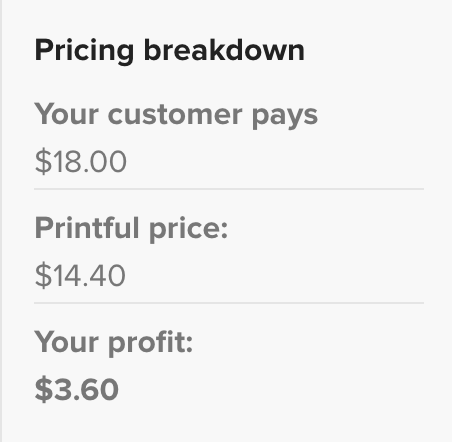
Printful, like many other print-on-demand Shopify apps, doesn’t require any upfront costs, such as subscription fees. However, if you order your own shirts, you’ll have to invest in inventory upfront. For example, let’s say you placed a minimum order of these exact same tank tops and design from a T-shirt printing company like Terminus Tees. The minimum order for screen printing with two ink colors comes to $609 or $12.18 per shirt, which is due upon placing the order.
Purchasing inventory upfront also often means you’re spending money on a product before you know if it’ll sell, so it may be a good idea to first test how an item sells using a print-on-demand company before investing in your own inventory.
Another factor to consider when deciding whether to dropship vs. purchasing your inventory is the additional time required to print or produce your own products. For example, if you work with a service like Printful to print apparel on-demand, you can take an idea and start selling it much more quickly than if you go the DIY route and have to wait for a production run.
Also, when you dropship through Shopify, all the inventory is handled for you. You don’t have to consider whether you have items like tank tops in stock — the inventory is handled entirely by your supplier, such as Printful.

Photo: Cody Wellons/store.adventurecats.org
However, the major benefit to going the DIY route vs. dropshipping is typically the profit margins. For example, when you compare the numbers from using Printful to dropship the tank top featured above vs. purchasing your own tank tops via Terminus Tees and selling them for the same price, your profit is $111 more when selling your own inventory. This is broken down in the table below.
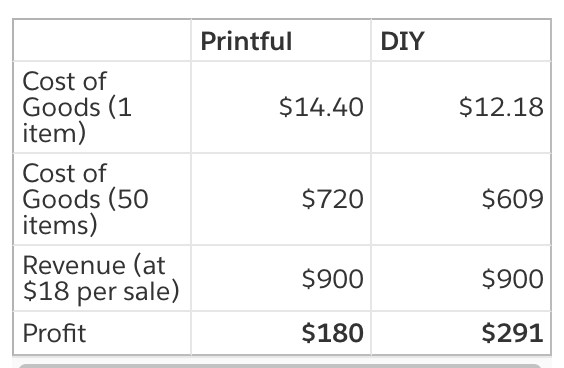
As you can see, the profits can be higher when you purchase inventory and ship it directly to consumers yourself.
How to start dropshipping on Shopify
Ready to get started using Shopify? First, you’ll need to get a Shopify account and create your store.
Set up a Shopify store
Visit Shopify.com and click “Start free trial” on the homepage to begin setting up your account.
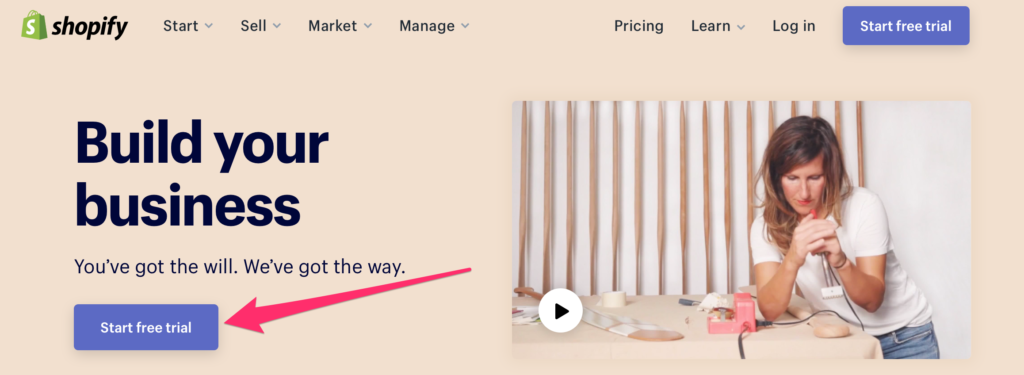
Next, you’ll be prompted to enter your email address, a password and your store name. When it comes to choosing a Shopify store name, there are a few things to keep in mind. You want something original that’ll stand out, but you also want to keep it simple and easy to spell and remember. For more tips, check out Shopify’s guide to naming your store.
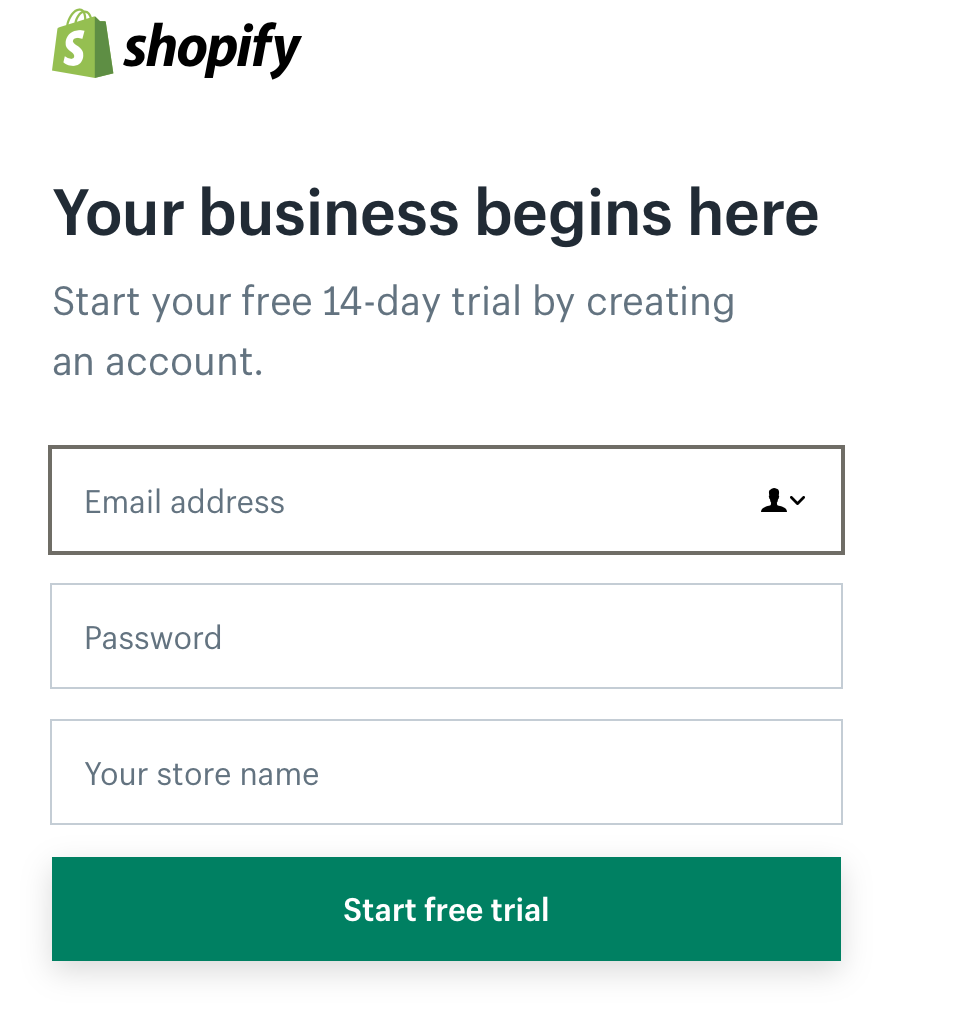
Now that your account is all set up, you’ll be asked to answer a few questions about your business and ecommerce experience.
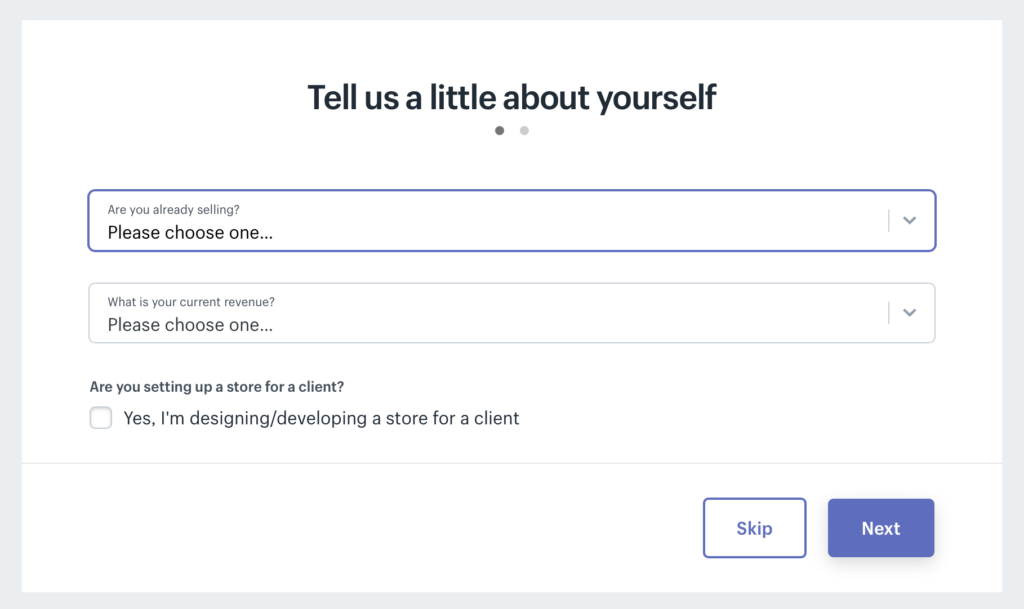
Once you complete these questions, it’s time to get your store set up for dropshipping. Begin by clicking “Settings” in the lower left-hand corner of your Shopify dashboard, as illustrated below.
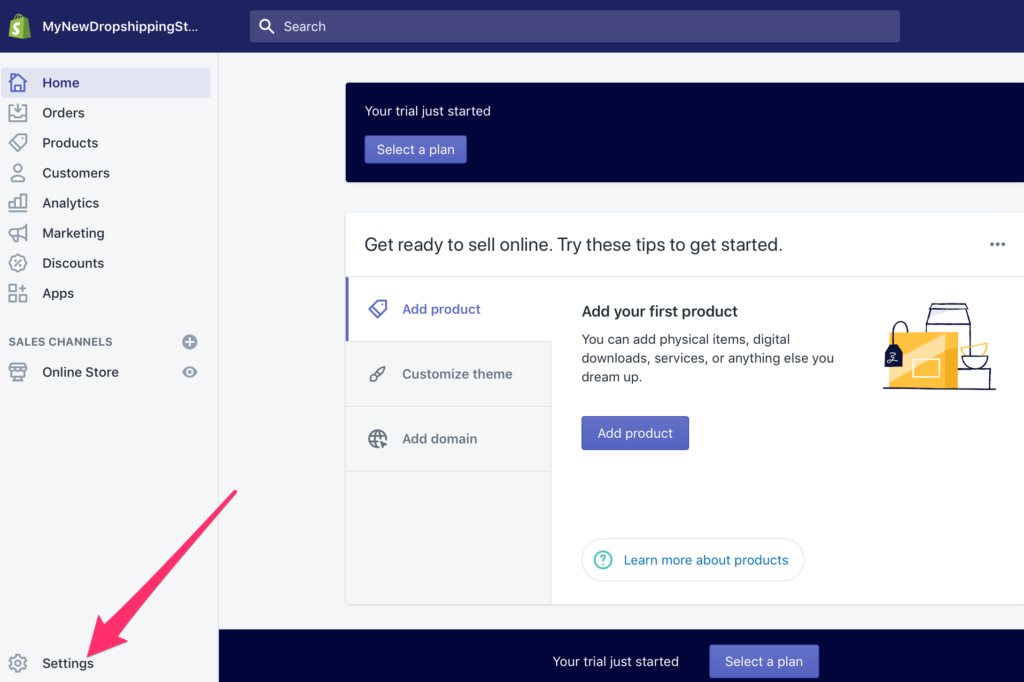
Here, you’ll enter your business address and banking information, such as a PayPal or checking account, to receive payments.
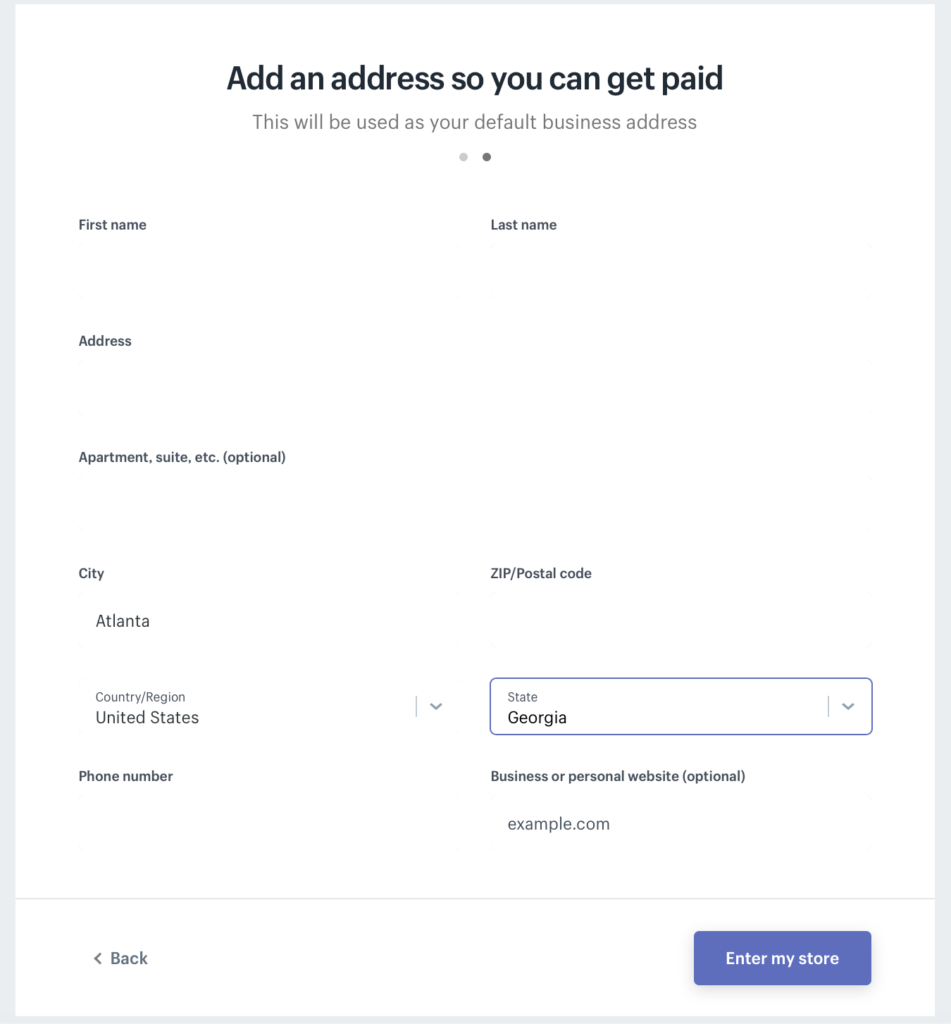
Once your payment information is complete, return to the settings dashboard, so you can set up a few more important parts of your store, including shipping information and store policies, which can all be accessed from this dashboard. You can also select a theme for your Shopify store.
Now, to get your Shopify store ready for dropshipping, you’ll need to add a sales channel. To do this, select “Sales channel” from the Settings dashboard, as illustrated below.
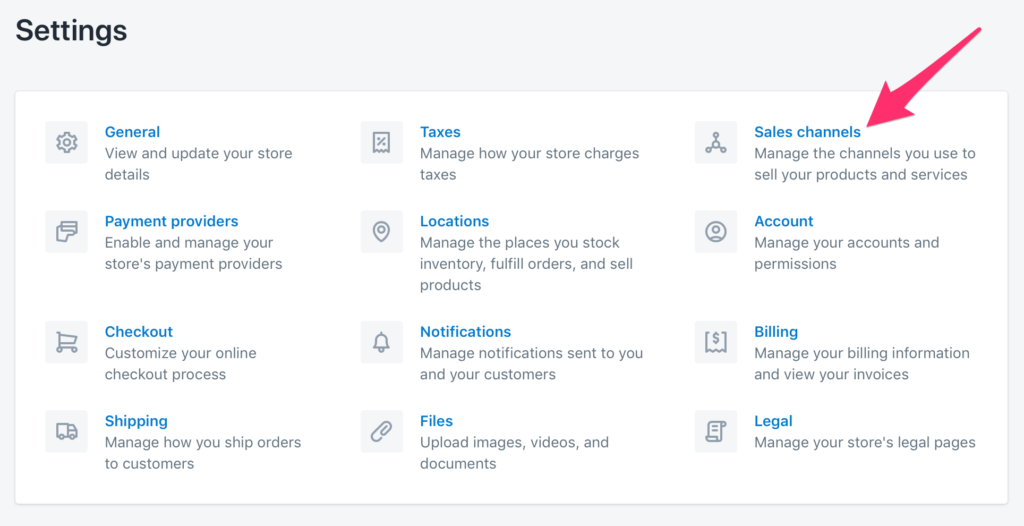
Next, select “Add sales channel.”
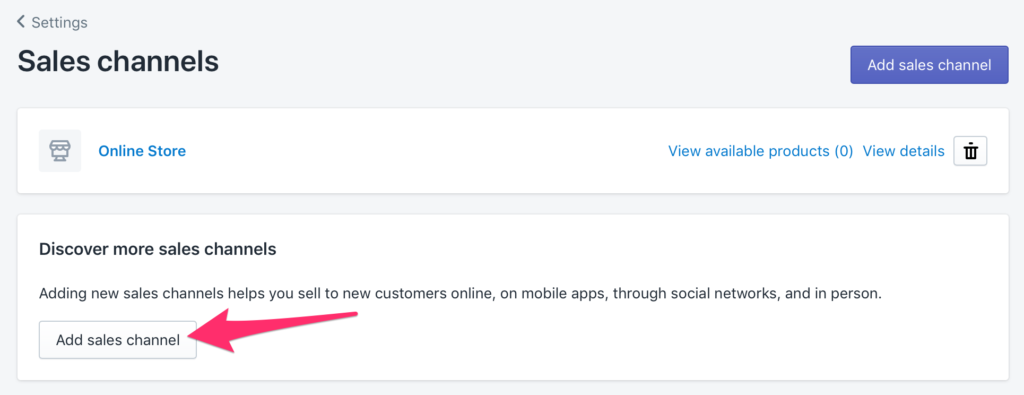
Here you’ll see a pop-up menu where you can choose from a variety of sales channels. If you plan to use a Shopify dropshipping app for your store, scroll to the bottom of the menu and select “Visit Shopify App Store” to find the app you’d like to use.
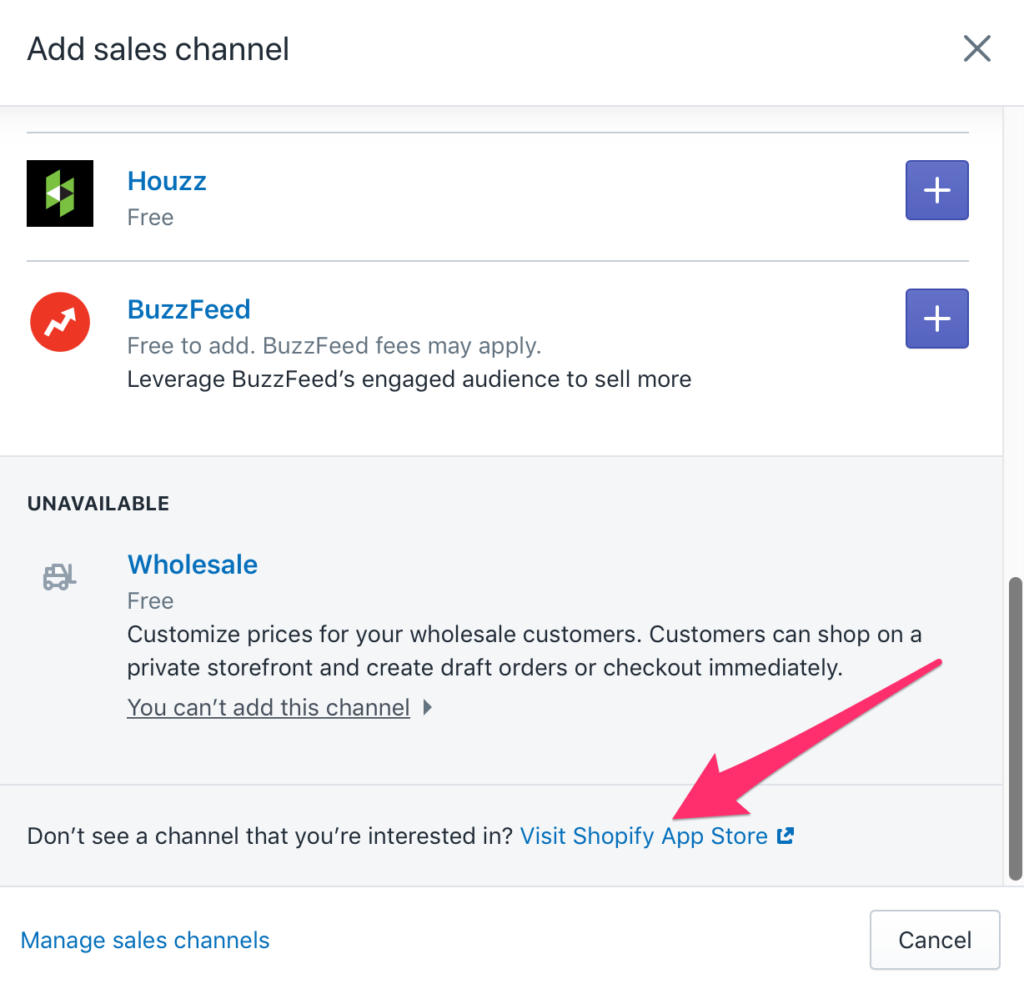
In the next section, we’ll explore some of the most popular Shopify dropshipping apps available.
Add products to your store
The easiest way to start dropshipping on Shopify is to use an app to acquire inventory for your store. Let’s take a look at some of the most popular apps for Shopify dropshipping and their pros and cons.
- Oberlo is the most popular app for Shopify dropshipping. It was designed specifically for the Shopify platform, so it integrates seamlessly and the process of adding products to your store is very simple. There’s a vast number of goods to choose from that are sourced both from the Oberlo marketplace and AliExpress, and you can even customize the products by renaming them, selecting photos and drafting your own item descriptions.
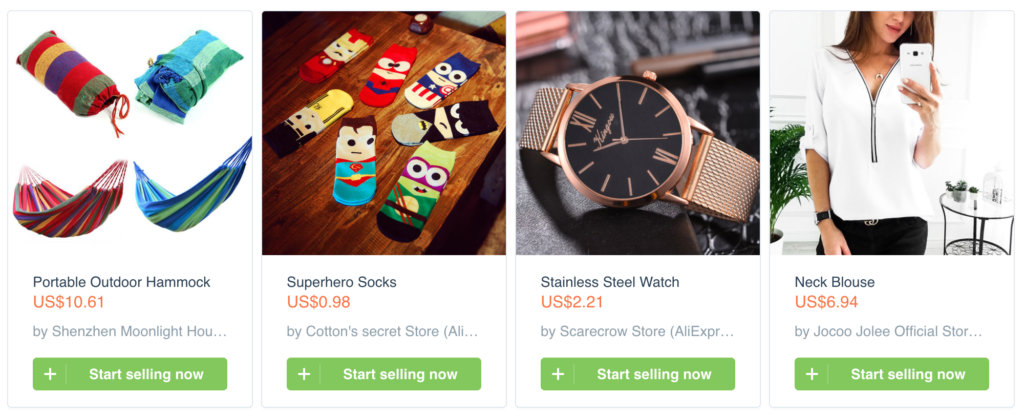
- With Spocket, you can select products from thousands of suppliers located in both the United States and the European Union. Because suppliers are in only these locations, delivery is generally faster and more reliable than working with suppliers across the globe, which means you can typically offer customers an excellent buying experience. One potential downside though is that pricing may not be as inexpensive as dropshipping products sourced from elsewhere.
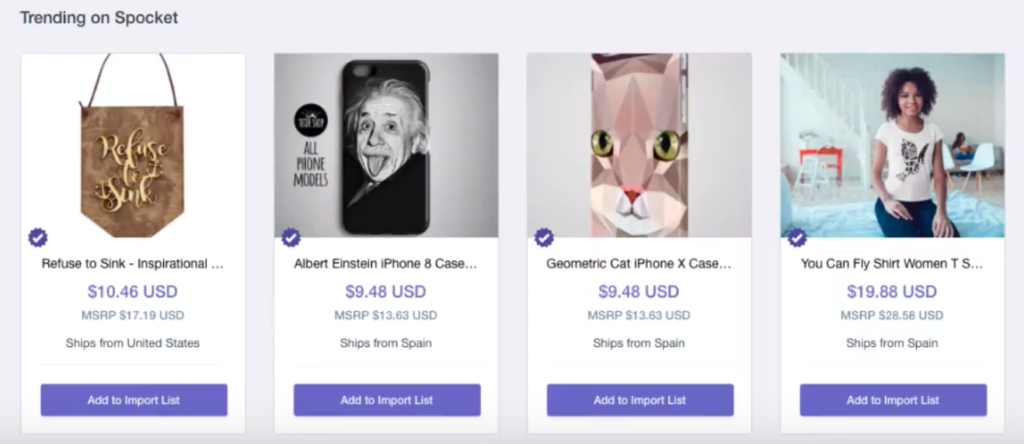
- MXED is a unique Shopify app because it allows retailers to legally sell official pop-culture merchandise from popular franchises like Harry Potter, Marvel, Nintendo, Star Wars and Pokemon. Because these franchises are so well known, there’s already a large market for them and high demand, so it can be a smart niche for your dropshipping store to capitalize on.
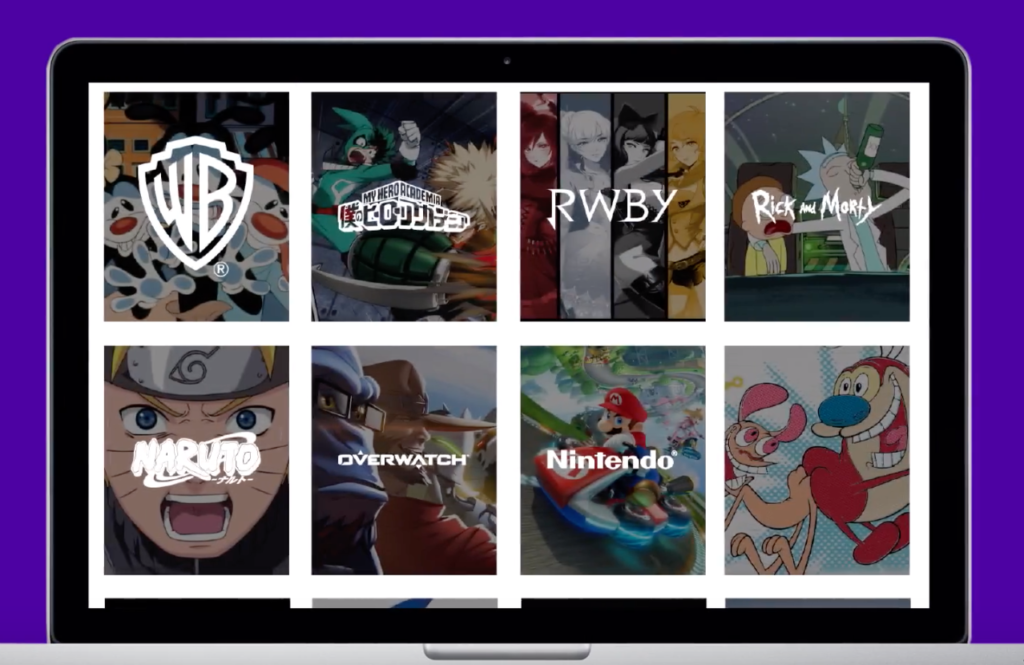
- There are thousands of products to choose from on Modalyst, including apparel, accessories and home goods, and you can easily add items to your Shopify dropshipping store with just one click. However, the shipping process isn’t entirely automated — you must purchase products from the seller on Modalyst when you’re notified of a sale.

- KITE, which enables you to print your own designs or images on products, offers more than 250 custom products, including apparel, phone cases, and stickers. The company doesn’t manage its own inventory though. Instead, it partners with manufacturers to print and ship orders, so shipping times for customers can vary greatly.
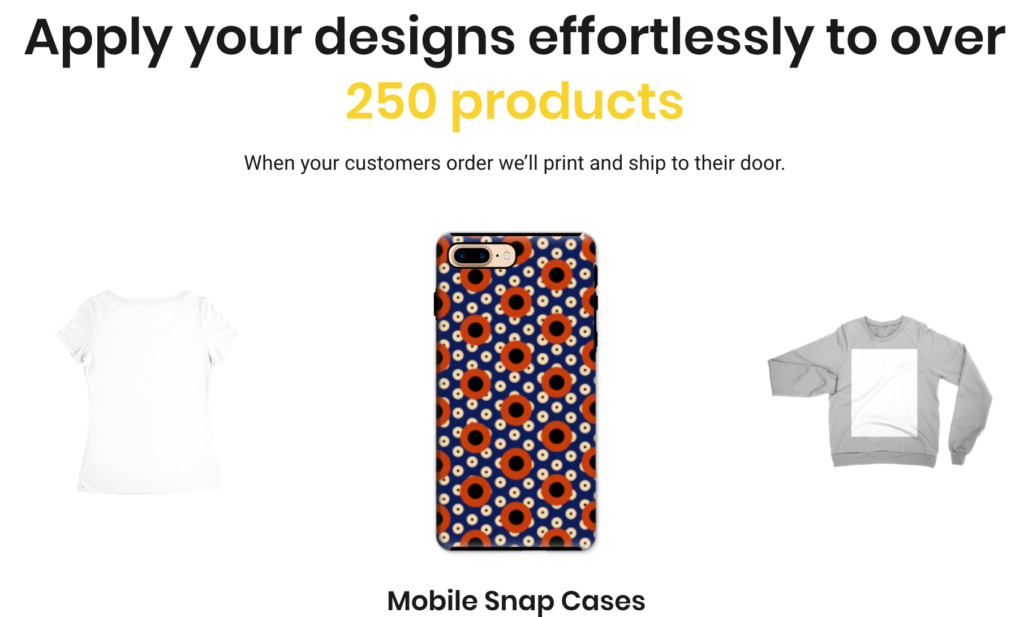
There are numerous other Shopify dropshipping apps as well. Simply search the Shopify App Store to learn more about the variety of apps available.
Is Shopify for dropshipping right for you?
Because of its ease of use and the variety of apps available to add inventory to your store, it’s understandable why Shopify is a popular platform choice for dropshipping.
However, to determine if Shopify is the right choice for your ecommerce business, start small. Begin by working with just a few suppliers or only a handful of products, so you can learn the ins and outs of both dropshipping and the Shopify platform. When you’re more comfortable with the process, you can expand your business by adding a more varied selection of products and working with more manufacturers.
As you gain experience with Shopify for dropshipping, you can take your ecommerce business to the next level by experimenting with various Shopify apps, as well as innovative ways you can implement social commerce with your marketing strategy as explained in this article by Curalate.
